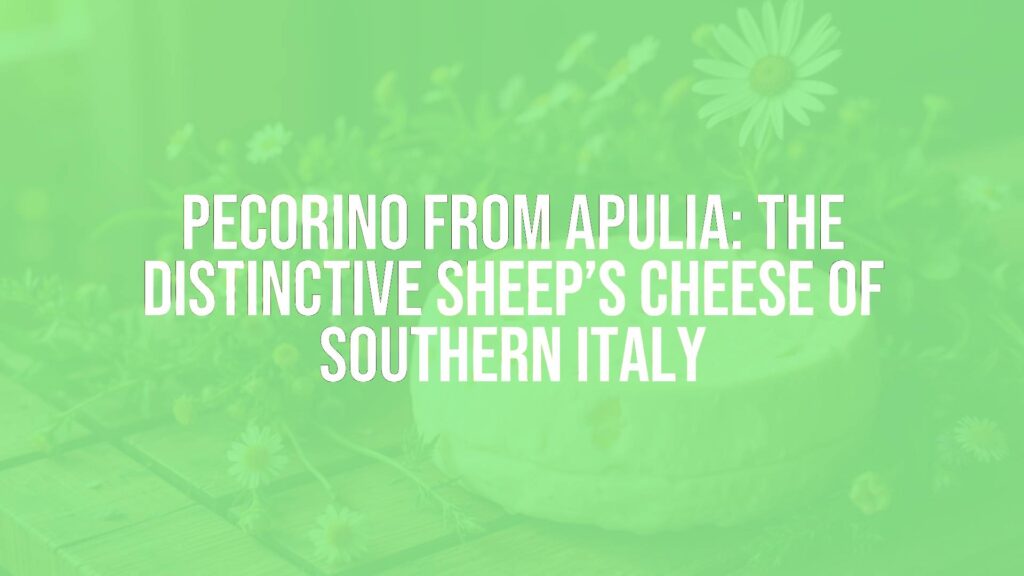Introduction to Pecorino Apulian Cheese
Pecorino (Apulia), also known locally as Pecorino Pugliese, is a celebrated sheep’s milk cheese native to the Apulia (Puglia) region in southeastern Italy. Often overshadowed by its more famous cousins from Tuscany or Sardinia, this regional variety boasts equally remarkable qualities and a vibrant history all its own. Made exclusively from the milk of sheep that graze in the unique Apulian pastures, this cheese stands as a proud representative of Southern Italian cheese-making traditions.
Distinctive Characteristics
Pecorino from Apulia is typically firm and compact, with a pale, straw-yellow to light ivory interior. Its texture can range from semi-hard when young to decidedly crumbly and granular when fully matured. This cheese is characterized by a concentrated, earthy aroma, a robust, salty flavor, and subtle notes of herbs and wildflowers—distinctive traits drawn from the local sheep’s grazing environment. The rind is natural, sometimes coated with olive oil or tomato paste to enhance preservation and impart additional character.
A Glimpse into History
Cheese-making in Apulia stretches back to Roman times, when sheep farming formed the bedrock of the rural economy. Pecorino owes its origins to the centuries-old pastoralist culture of the region—shepherds would craft this cheese as a means of preserving abundant spring milk. Throughout generations, Apulian families have safeguarded traditional methods, passing down the artisanal craft that links today’s Pecorino with its ancient roots.
Production Insights
This cheese is made by curdling fresh sheep’s milk with natural rennet, then breaking the curds and draining the whey. After shaping, wheels are salted and left to mature, often for several months, in cool cellars or caves. The length of aging influences texture and intensity: younger Pecorino Apulian can be supple and milky, while older wheels develop pungency and a firmer bite. Unlike some northern counterparts, Apulian producers may opt for raw or lightly pasteurized milk to accentuate flavor complexities.
Regional Variants and Pairings
Within Apulia, there are regional nuances: for example, in the Tavoliere and Gargano areas, Pecorino may be even sharper and saltier due to drier climates and aged shepherding practices. Wheels are sometimes aged in baskets, leaving a striking imprint on the rind. Pairing Pecorino Apulian with rustic breads, dried figs, honey, or ripe tomatoes is customary, as these combinations balance the cheese’s salinity and highlight its regional essence. For wine, robust reds like Primitivo or Negroamaro from Puglia create a harmonious match.
Cultural Significance and Enjoyment
Pecorino has long been a staple of the Apulian table, enjoyed both as a daily food and in festive settings. It plays a key role during local festivals, is grated over orecchiette pasta, or savored in antipasti with olives and cured meats. Locally, residents cherish the cheese’s rusticity, viewing it as a link between fertile land, traditional labor, and community identity.
Serving Suggestions
For the fullest experience, bring Pecorino (Apulia) to room temperature before serving to unlock its bouquet of aromas and flavors. Try it sliced alongside seasonal fruit, crumbled into salads, or simply drizzled with Apulian olive oil. Thanks to its distinctive profile, it can be enjoyed solo or as a flavor-enhancing accent in many Southern Italian dishes.

